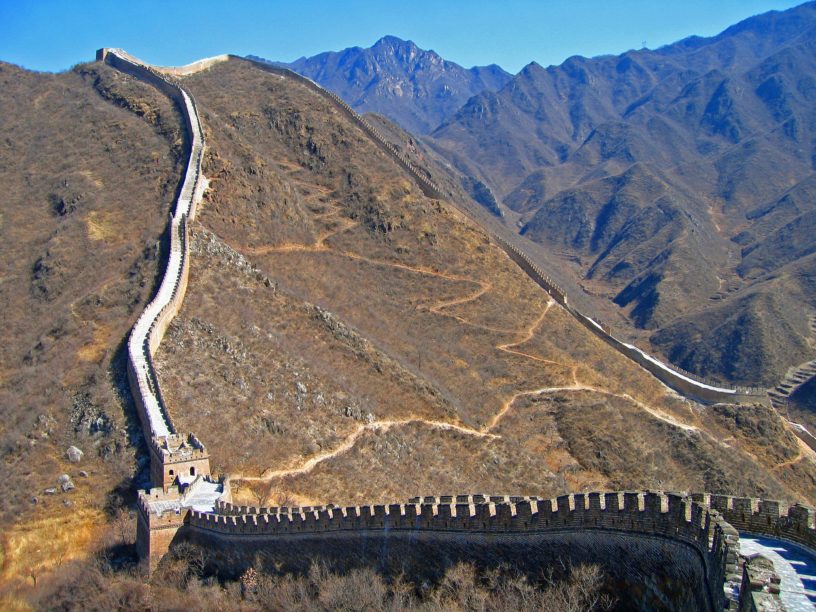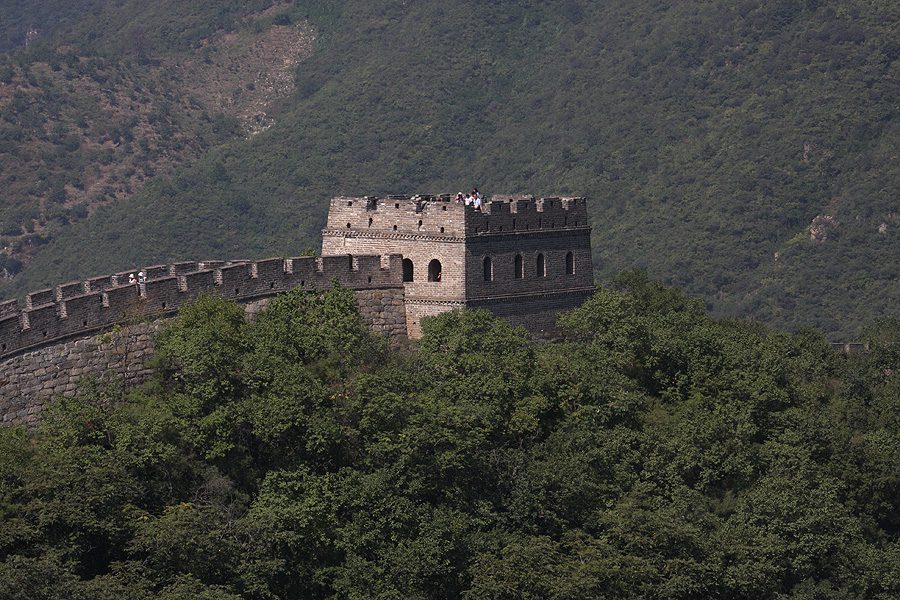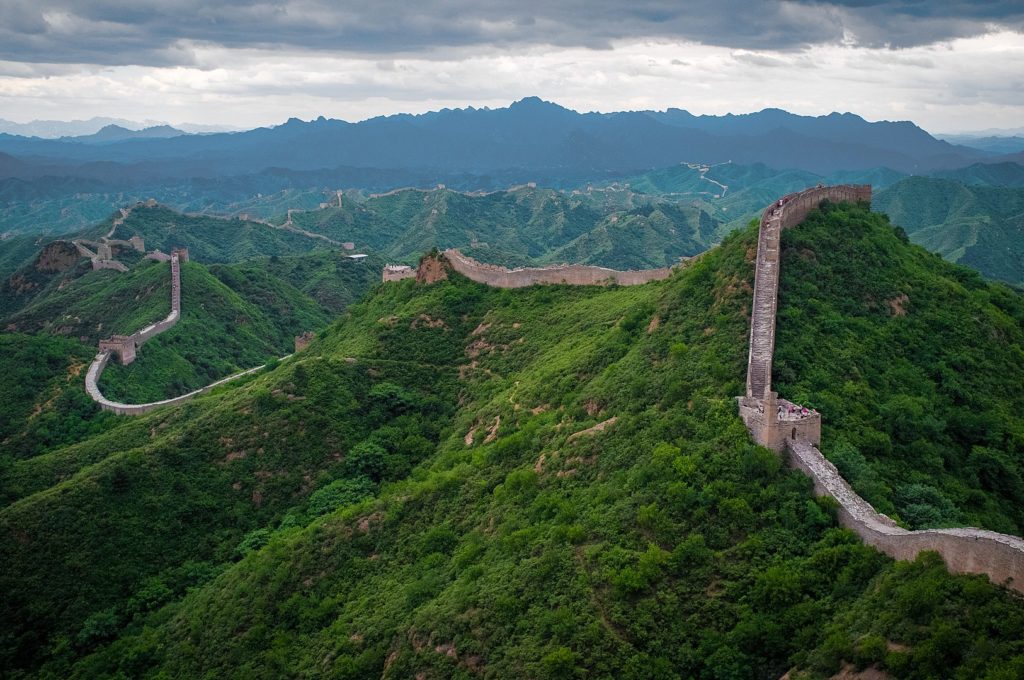
By Severin.stalder-Wikimedia
Top 20 Facts about the Great Wall of China
*Originally published by Lilian on April 2020 and updated by Lilian on July 2022 and Updated by Vanessa R on June 2023
The Great Wall of China is estimated to be 2,300 years old. It is in the list of the seven wonders of the world.
It was named the great wall as a collective name for a series of walls that were built across the historical northern borders of China.
The wall was built to protect and unite territories of Chinese states and empires against various nomadic groups of the steppe.
The wall is made up of earth and stone, it stretches from the China seaport of Shanhaiguan into Gansu province.
The wall was built to overlap in some strategic sections of the wall for maximum security.
The Great Wall of China became a UNESCO World Heritage Site in December 1987.
The wall is the longest man-made structure in the world, with a total length of about 13170.7 miles (21,196.19 km).
Read more on the best cities to visit in China. Here are the top 10 facts about the Great Wall of China.
1. The Great Wall was built more than 1800 Years
When Emperor Qin Shi Huang took over the neighbouring territories in 221 BCE and made it the Qin Dynasty, He started constructing a 5,000-kilometer wall to protect his newfound territory.
It was a common feature to have walls erected around Chinese territories to protect the citizens from enemy invasions.
The walls date back to the 8th century BCE when barriers were put up to keep away nomadic armies.
Dynasties that took over would continue with the work and fortified their territories even more.
The Great Wall of China is largely credited to the Ming Dynasty which created the most recognized segments of the wall between the 14th and 17th centuries.
2. The Great Wall is made up of several walls
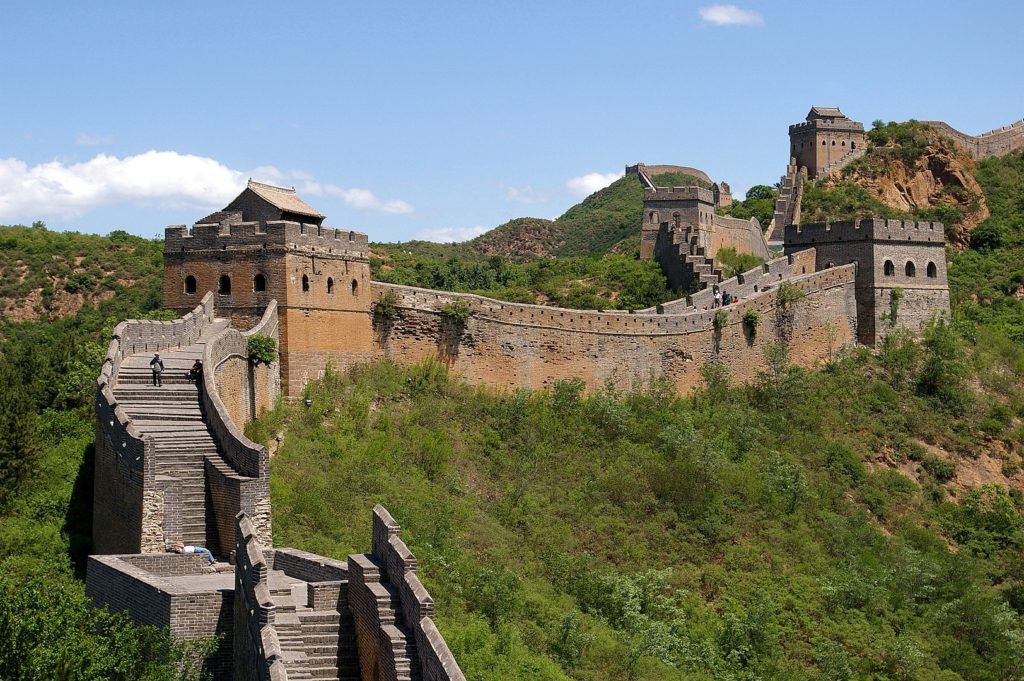
By Jakub Hałun -wikimedia
Most people believe that the Great Wall of China is one continuous wall.
The wall is made up of more than 20,000-kilometers of walls that stretch from the northern border of Ancient and Imperial Chinese territories.
It is made up of walls that are seamless in different sections. The sections were built by different dynasties over a period using stones and other substances.
3. Sticky rice was used in the construction of the wall
The wall was built with stones and earth, a more important part of the construction was the glutinous rice.
The sticky rice was used as the mortar due to its adhesive property. Studies have shown that the sticky substance of the rice is behind the endurance and strength of the wall.
It helped fix the bricks in place and held the bricks together so tightly that weeds cannot grow in many parts.
4. The wall was built by Chinese prisoners
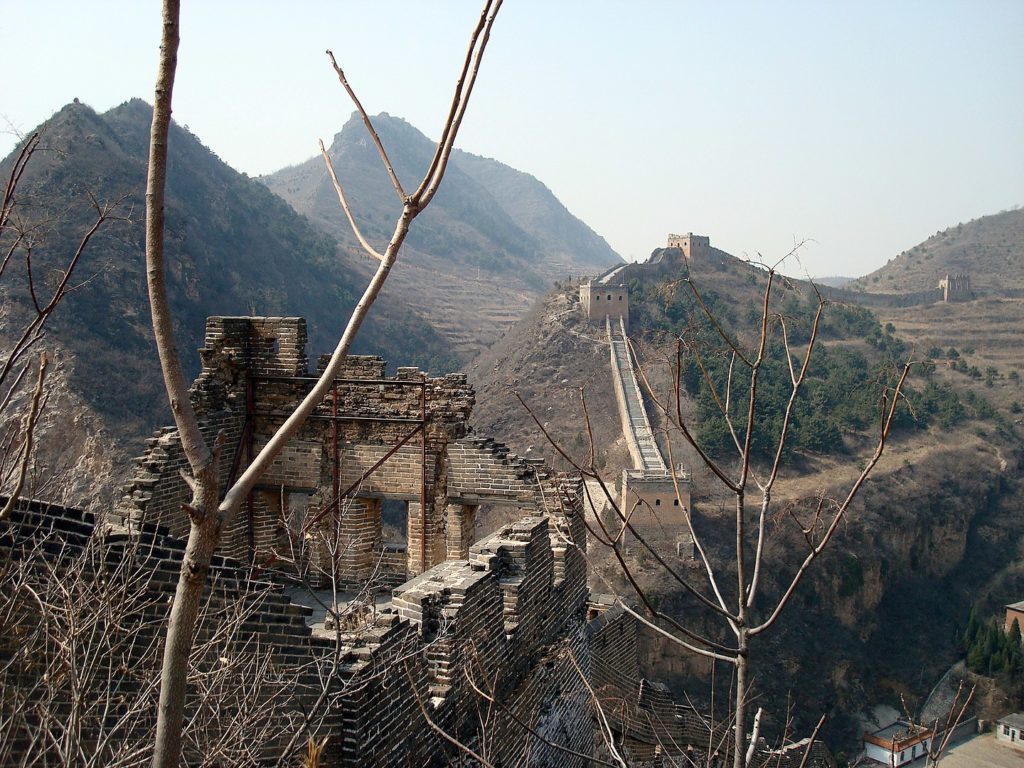
By Notyourbroom – Wikimedia
During the reign of the Qin Dynasty, the construction of the Great Wall was done by convicted criminals. They were also part of the maintenance and surveillance team too.
The prisoners were distinguished from the rest of the law-abiding citizens by having their heads and faces blackened, they also had their legs in chains.
Those that were found guilty of homicide or tax evasion were punished by being sent to the wall construction.
It was a dangerous affair as it is estimated that 400,000 people died during the construction of the wall.
5. Roosters were used to guide the dead to crossover
The construction of the wall was a dangerous task, many lives were lost in the process of construction.
After the loss of life of their loved ones, the grieving families feared that the spirits of their beloved would be trapped at the wall forever.
They, therefore, strived to free them by crossing over the wall with a rooster in hand.
They believed that the rooster would help the trapped souls away from the wall to the other life where they would be free.
6. Foreign tourists have been more drawn to the wall than the Chinese tourists
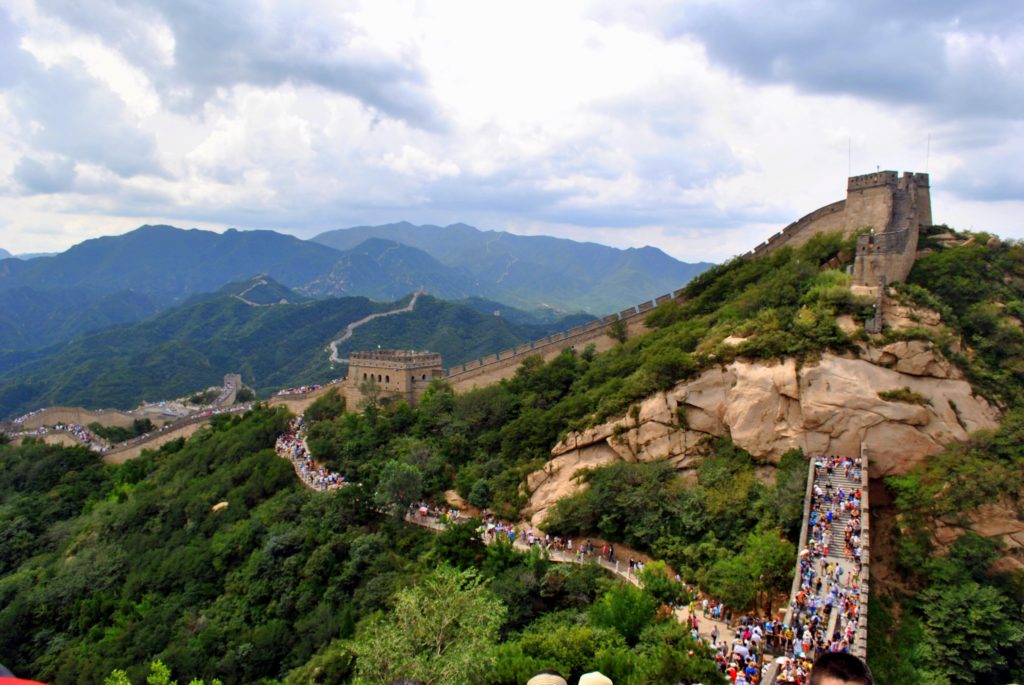
Photo by Melissa on Unsplash
The Great Wall of China is famous the world over and is always on the bucket list of any tourist visiting China.
This famous landmark began drawing the attention of tourists in the 20th century becoming an international attraction.
The Chinese became interested in the wall’s appeal in the 19th century after they had trade engagements with other Asian and European countries.
The traders that went to China would go back to their home countries with tales of arts and prints and the wall. This made the Chinese appreciate the wall even more.
The most visited section of the wall is known as Badaling near Beijing. This section receives almost 63,000,000 visitors per year.
It reaches a visitor flow of 70,000 people per day during peak season.
7. Some parts of the Great Wall were vandalized
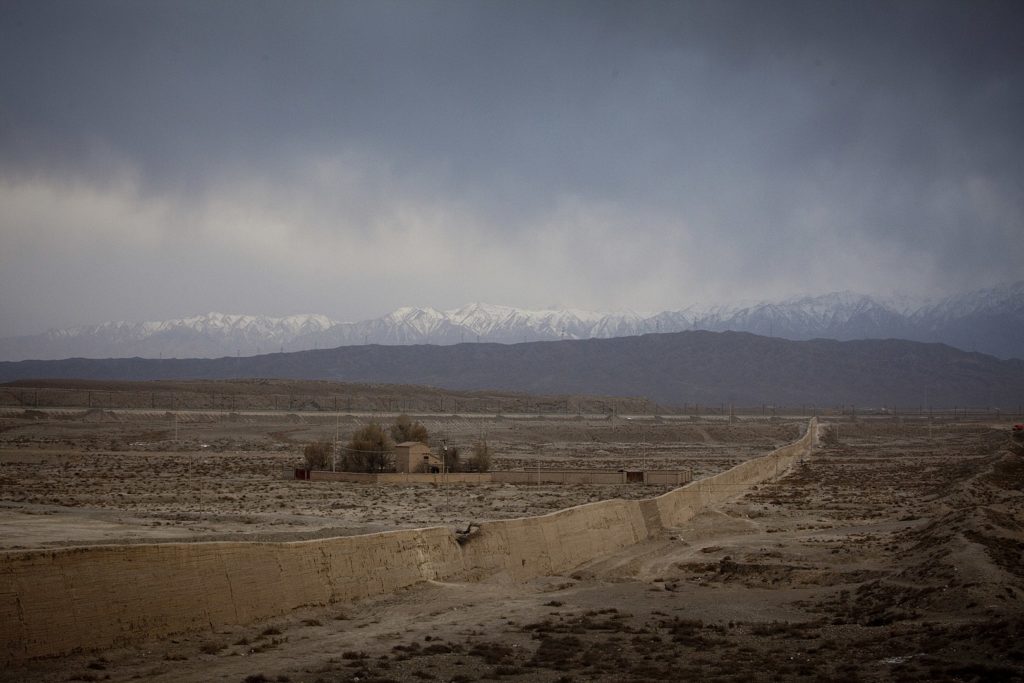
By Land Rover- Wikimedia
Not all parts of the wall that stands today are what were there centuries ago. The surviving part of the wall that stands today is 13,171 miles (ca. 21,197 km) long.
This is believed to be less than the peak of the wall during the rule of the Ming Dynasty.
At least 1200 miles of the wall were destroyed and vandalized to make way for construction.
8. The Great wall is slowly vanishing
It is believed that some sections of the Great Wall in Gansu and Ningxia provinces will disappear in the next 20 years.
This section of the wall is said to be degenerating quickly due to natural and human activities.
These predictions on the slow disappearance of the wall have been more in the 21st century. Erosion and human activities are destroying the wall.
9. Bricks from the wall were used to build homes
Part of the reason for the disappearance f some miles of the Great Wall is that during the Cultural Revolution from 1966 to 1976, bricks from the wall were used to build homes, farms and reservoirs.
Mao Zedong, former chairman of the people’s republic of China and the Red Guard saw the Wall as a relic whose materials would better serve in the development of contemporaneous housing than a historical landmark.
10. The wall was built by several dynasties
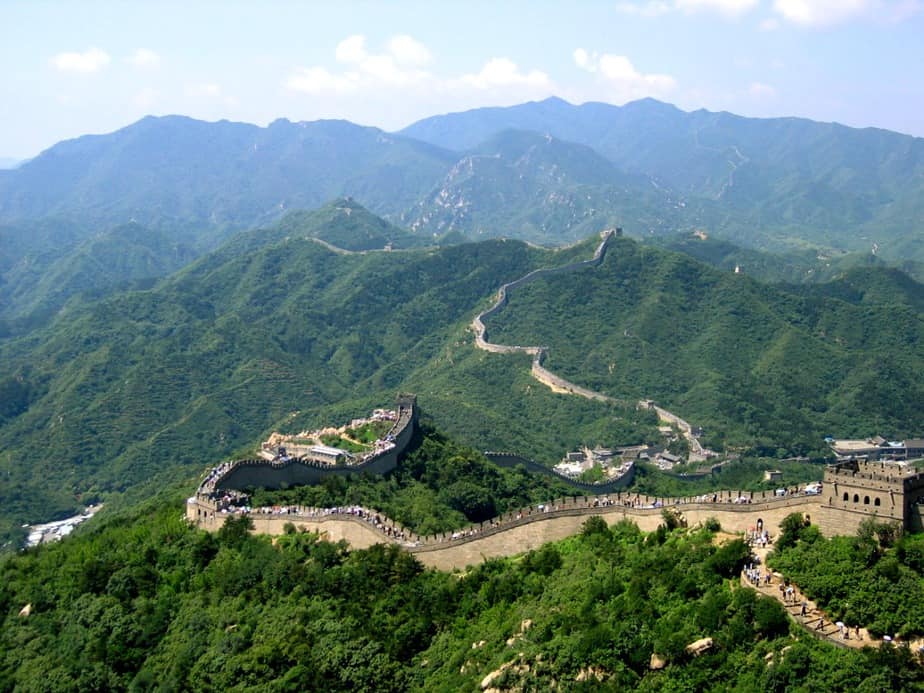
By Samxli,-Wikimedia
When the construction of the wall began, it was built by three states that were fighting.
It was later rebuilt by six other dynasties and then restored as a tourist attraction by the Chinese government.
The Wall authorization was done by the First Emperor who died in 210 BC, long before the emergence of the Mongols around AD 800.
11. Each dynasty used an advanced method to build the Great Wall
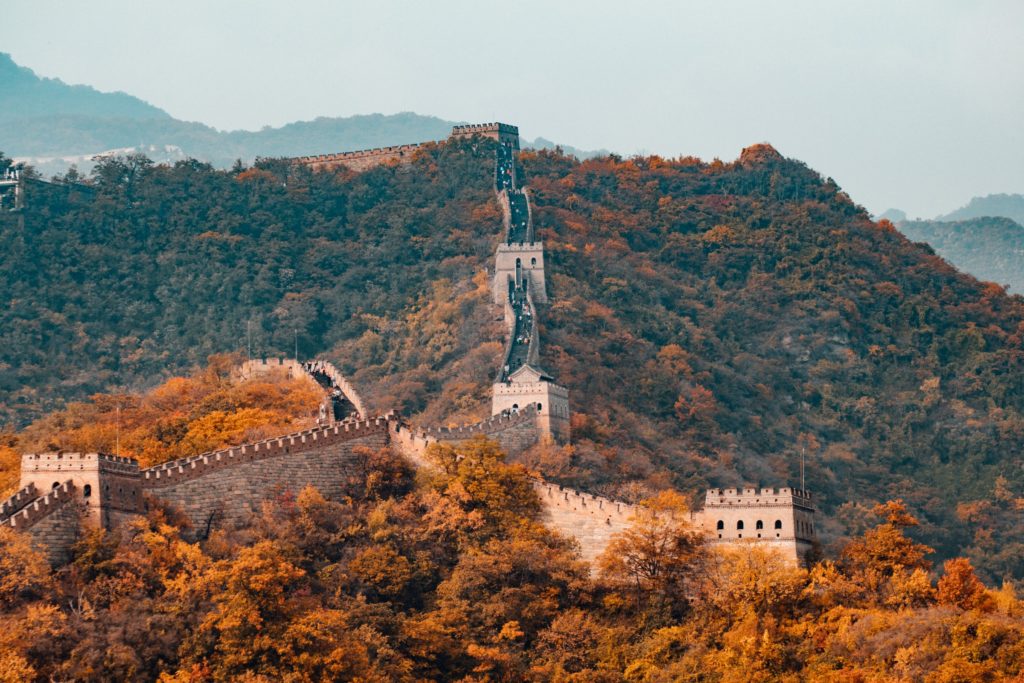
Great Wall of China. Photo by Hanson Lu on Unsplash
The Great Wall of China is made up of 19 separate walls joined to form one massive wall that we know today. This resulted in each wall looking different from the other.
Some sections of the wall were built using rammed earth and wood while other sections were constructed using bricks. There are sections of the Wall that were constructed using granite, marble, and blocks.
Before the reign of Qin Shi Huangdi, also known as the First Qin Emperor, in 220 B.C.E., different regions of China had their wall.
Each ruler of the 15 provinces determined what material was used to build the wall or what additional fortification to have.
After taking over, Emperor Qin Shi Huangdi united China and proposed joining all the walls to form one massive wall that we see today.
12. The Ming Dynasty spent 276 years building the Great Wall of China
As time passed, the design and architecture of the Great Wall of China improved. One dynasty credited with most of this is the Ming Dynasty.
Today, when you visit the wall, what you will see is majorly sections of the wall that was built during the Ming Period using stones. The emperors that rule added new fortifications such as watchtowers and platforms to the wall.
This dynasty built more than 4,000 kilometres (2,400 miles) of the Great Wall.
13. The Great Wall of China also served as a reinforced highway
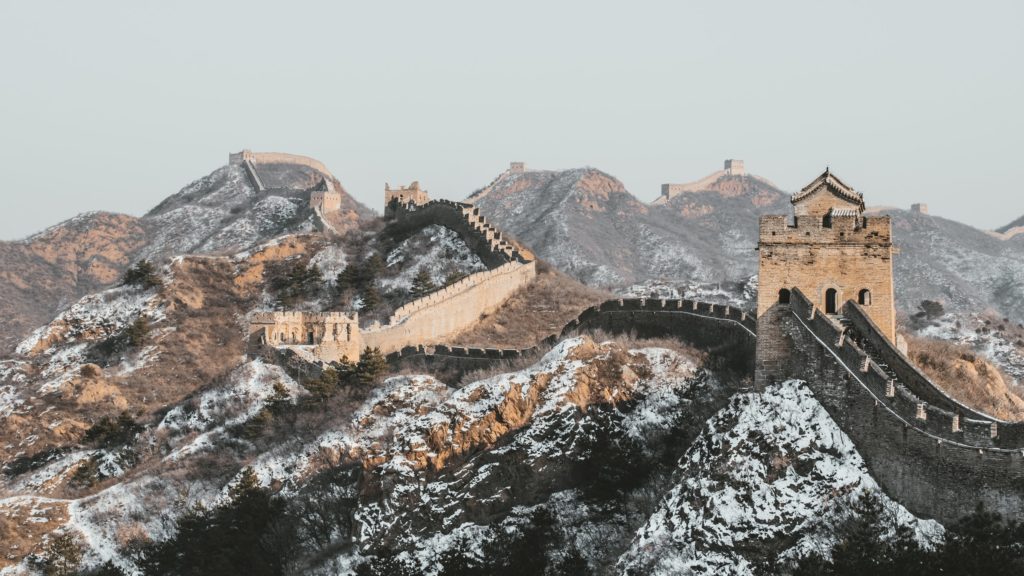
Great Wall, Jinshanling. Photo by Max van den Oetelaar on Unsplash
This magnificent landmark is more than just a wall traversing from one end of the country to the other.
Traversing from one end of the region was not a pleasant affair for the ancient Chinese. The territory is not flat and there were several unpassable areas.
The wall, therefore, curbed transportation inconvenience through the mountain ridges and was used by traders and other travellers.
Another major reasons why the wall was constructed was to protect the people from invaders and looters. It is for this reason that after the Ming Dynasty took over, they incorporated military defence system into the wall.
They used innovative techniques to build watchtowers, beacon towers, and fortresses in different sections of the wall. These were used for surveillance, as command posts for logistics, and for communication.
The result was a stronger, impregnable, and more state-of-the-art wall.
14. The Great Wall is today viewed as more of a cultural symbol than a fortification
It was after the takeover by the Qin Dynasty that the Great Wall lost its glory as a defence system.
This happened in the 17th century, when the Manchu emperors, who formed the Qin Dynasty extended their rule from China to Inner Mongolia.
The Wall was no longer viewed as important for national defence. However, it remained a cultural symbol. It is for this reason that it was designated as a UNESCO World Heritage Site in 1987.
15. A lost Husband, a Broken heart, and a collapsed wall: a tale of the Great Wall of China
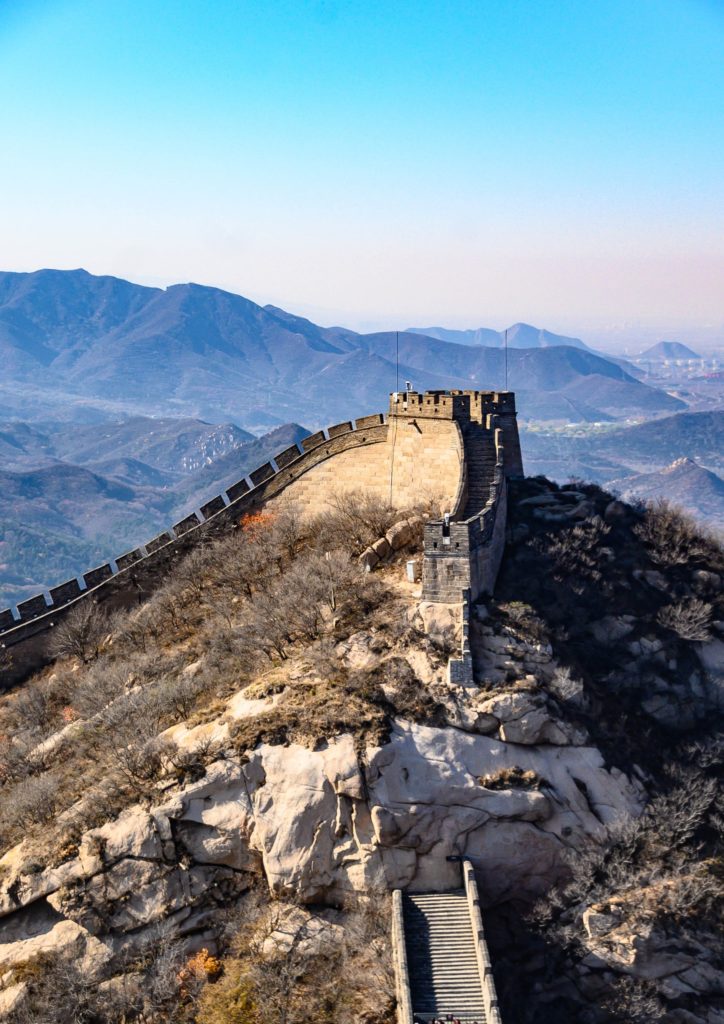
A view of the Great wall of China. Photo by Manish Tulaskar on Unsplash
There are several folktales told over centuries about the mysteries of the Great Wall. One such is about a woman who allegedly cried so hard that a section of the wall fell.
The woman, popularly referred to as lady Mengjiang, had travelled to the wall to take winter clothes for her husband who had been employed to build it.
On arrival, she could not find her husband. Upon enquiring, she was informed that he had died. This news broke her heart and she wept bitterly until a section of the wall collapsed, revealing what was said to be the bones of her husband.
The section of the wall that collapsed is said to be in Shandong Province. Additionally, the Lady MengJiang temple was constructed in Shanhaiguan in her honour.
16. The Great Wall was built over the course of more than 20 dynasties
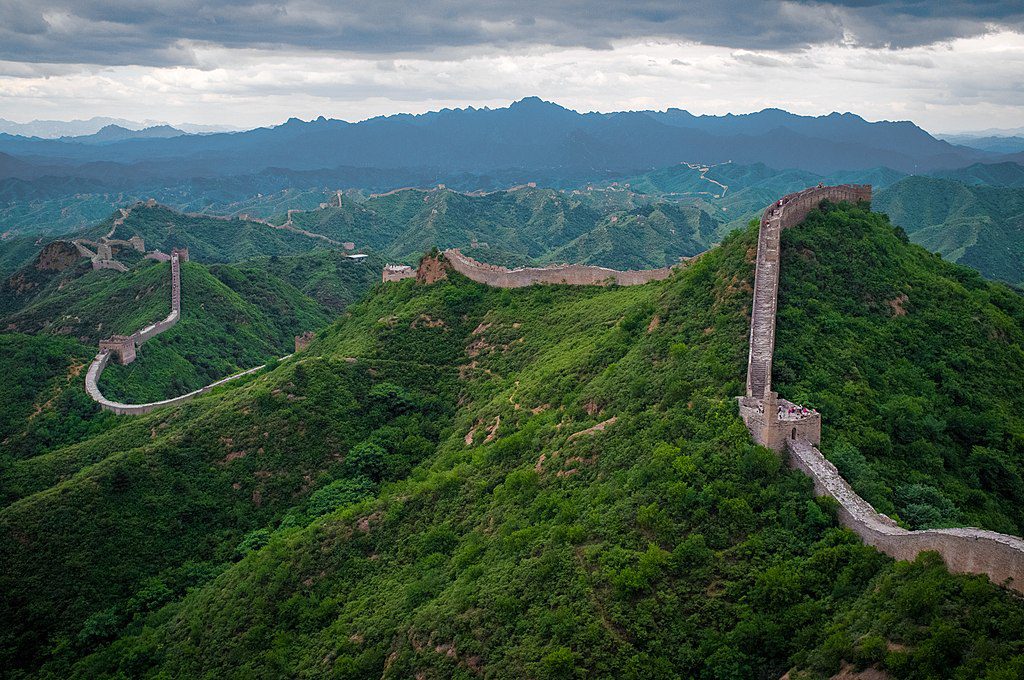
Roman Harak, CC BY-SA 2.0, via Wikimedia Commons
Many attempts were made to build, rebuild, and modify the Great Wall, from the Kingdoms through the dynasties. The following are a few of the significant contributions:
As he ordered the joining of the Qin, Zhao, and Yan state walls, Emperor Qin of the Qin Dynasty built the first unified Great Wall.
To safeguard the Silk Route, the Han Dynasty strengthened and added to the Qin Great Wall.
The Wall went through extensive reconstruction under the Sui and Song dynasties. Almost a hundred years after taking control, the Ming Dynasty rebuilt the wall to strengthen their defences. The Great Wall was constructed during this time, and these are the sections that are the most well-known and well-preserved.
17. There are still parts of the Great Wall being found today
In June 2021, a new portion of what appears to be a Great Wall fort was accidentally found in Shaanxi Province. While removing earth for the construction of roads, locals discovered what they now refer to as the Qingping Fort.
A painted clay structure and two courtyards were discovered. This fort was most likely constructed during the Ming era based on its design and features.
18. The Great Wall of China is one of the UNESCO World Heritage Sites
It was not only respected all over the world but also a symbol of China’s national identity. In 1987, the Great Wall was included in the list of cultural and natural landmarks by the United Nations Educational, Scientific, and Cultural Organization (UNESCO).
19. It is listed as the Longest Wall in Guinness World Records
The Great Wall is also the longest wall in the world according to the Guinness Book of World Records.
The organisation stated that its 3,460 km main line is “almost three times the length of Britain,” and that’s without even accounting for the additional 3,530 km of branches and spurs.
20. It was once thought to be the only man-made building that could be seen from outer space
This claim is a “space-based myth,” according to NASA. Even China’s Yang Liwei, an astronaut, said he did not notice the building from a great height.
The Great Wall cannot be seen from space with the human eye alone, according to astronauts and scientists. It is challenging to recognize the wall because of its narrowness and similarity in texture and colour to the surrounding surroundings. Nonetheless, by using radar imagery from space, it is possible to see or take pictures of the wall.
The Great Wall of China is the pride of the country. The amazing architecture has survived several centuries.
The wall was built to keep away any invaders but it failed to do so. Some invaders managed to attack the wall while others failed.
The wall was close to the Silk Road which had a range of agricultural products and finer textiles, this attracted more enemies.
Planning a trip to Paris ? Get ready !
These are Amazon’s best-selling travel products that you may need for coming to Paris.
Bookstore
- The best travel book : Rick Steves – Paris 2023 – Learn more here
- Fodor’s Paris 2024 – Learn more here
Travel Gear
- Venture Pal Lightweight Backpack – Learn more here
- Samsonite Winfield 2 28″ Luggage – Learn more here
- Swig Savvy’s Stainless Steel Insulated Water Bottle – Learn more here
Check Amazon’s best-seller list for the most popular travel accessories. We sometimes read this list just to find out what new travel products people are buying.

